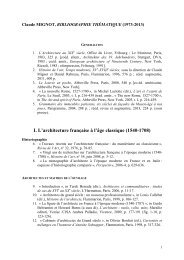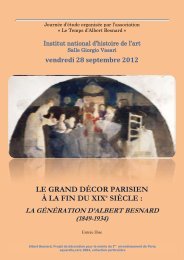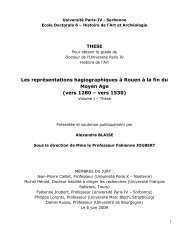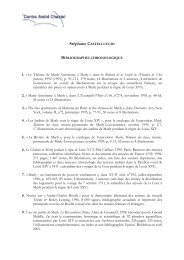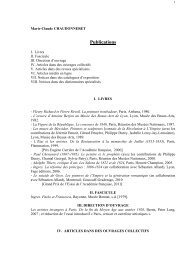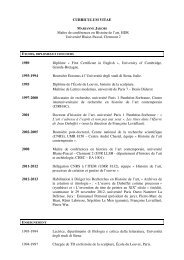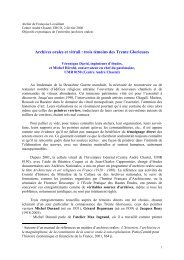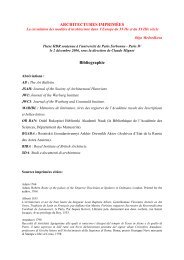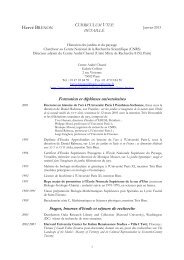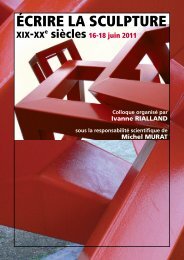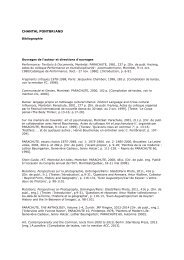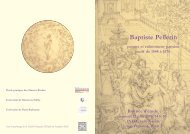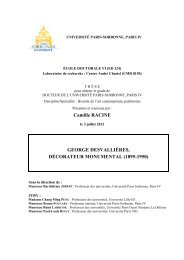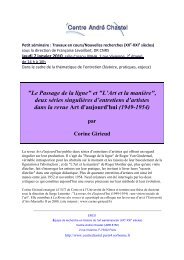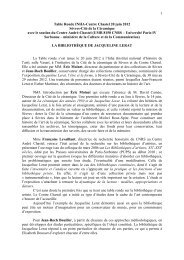Corpus Vitrearum - Centre André Chastel
Corpus Vitrearum - Centre André Chastel
Corpus Vitrearum - Centre André Chastel
You also want an ePaper? Increase the reach of your titles
YUMPU automatically turns print PDFs into web optimized ePapers that Google loves.
mercredi 5 juilletRésumés des communicationsFig. 2 Thomas Willement’s 1845 window in St George’s chapel,Windsor Castle (nII) depicting Edward IV and Elizabeth Woodville, based onthe ca. 1482 « Royal Window » in Canterbury Cathedral (NXXVIII).house of James Powell & Sons. His accurate watercolourdrawings represent a watershed in thearchaeological recording of medieval stained glass(Fig.1).Far less well known to modern scholarship isa man with a foot in both the commercial and thescholarly camps. Thomas Willement (1786-1871)was the son of a Norwich decorator and coachbuilderof Huguenot descent who moved to Londonin the 1780s.Willement’s artistic training appears tohave been in his father’s business in the newly fashionableneighbourhood of Mayfair. His early work instained glass was heraldic in character. His first wasmade in 1812, but it is not known how and wherehe first learned to work in stained glass.He is knownto have supplied designs based on borders atCanterbury Cathedral to glass-painter WilliamRaphael Eginton (1778-1834), for use in the GreatHall at William Beckford’s Gothic fantasy house,Fonthill Abbey 3 . Willement was one of the most successand prolific stained glass makers of the periodca. 1820-1850. His contemporary reputation washigh and not confined to England :in 1847,for example,Adolphe Didron described him as « le premier pein-tre sur verre de l’Angleterre. Ses fenêtres de l’églisedu Temple à Londres sont réellement remarquables» 4 . He was also a significant contributor tothe antiquarian and scholarly rediscovery of themedieval past and received the recognition of hisacademic peers in 1832 when he was elected aFellow of the Society of Antiquaries of London. Hisfirst book, Regal Heraldry :The Armorial Insignia of theKings and Queens of England from Coeval Authorities(London 1821) derived several of its examples fromstained glass sources and its coloured plates werewidely copied (Fig. 2). His Heraldic Notices ofCanterbury Cathedral with Genealogical andTopographical Notes followed in 1827. Canterbury’sstained glass was the inspiration for a number ofWillement’s own stained glass designs (Fig. 3). In1844,already engaged to make new windows for thechoir clerestory of the chapel, he published AnAccount of the Restorations of the College Chapel of StGeorge,Windsor (London 1844). He also contributedcopies of authentic images for his friend Henry Shaw’sinfluential books Specimens of Ancient Furniture(London 1836) Specimens of the Details of Elizabethan38



